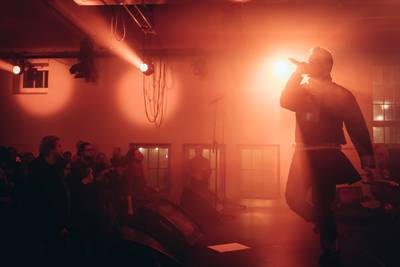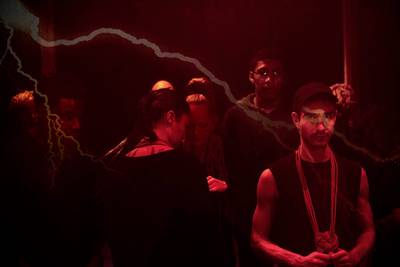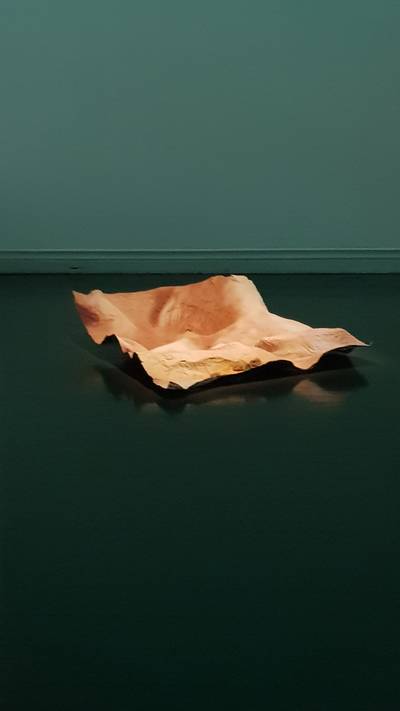

Reviews


All I’m saying is, I want equity, I also want space; I want to use technology for my neuro-hacking and biohacking to affirm my gender-pro-choice. I’ll have what he’s having please. Until I reclaim my basic human rights, I resist the binary, refuse the insufficient status quo.
READEjaculation Falls: A Queer Diasporic Review
Vishnu Vardhani Rajan on resisting the binary and refusing the insufficient status quo.


Fionde’s story is based on four central elements, which are firmament (represented by the balloons), desert (place), wind (sound) and stars (lights). I have built my review using these elements as titles for each section.
READFIONDE: Unbinding the lost play within us


MATA is a story situated in the Amazon, one that is true, topical and impactful. As MATA is a story, the review will also start as a story.
READMATA: Not a Forest, but a Killer Field
Riina Rastas reviews ‘MATA’ a documentary film about industrial land use impact on climate change and the indigenous peoples’ attempt to protect their land.


It is high time more events happened in Helsinki, led by Indigenous peoples. In this way, the venue naturally becomes a place of belonging, a place where attendees free themselves by just following their own rhythm while speaking up for care towards nature and acknowledging the need to have a night diverse in identities, languages, and musical traditions.
READDarkness Into Flashing Rhymes: Ailu Valle and DJ Uyarakq’s Opening Night Club at the Baltic Circle Festival


The following creative review is inspired by the theatre event entitled “Undertone: a Proposal for Legal Loitering”, an all-night-long amalgam of performances from 08 pm - 05 am that took place in Tiivistämö on November 27th of 2021. The show was put together by a group of creative associates that were convened by Geoffrey Erista. The show expresses the subcultures of electronic music and the ballroom scene, all the while paying tribute to the active creation of safe spaces.
READTransformations: The Secret Worlds Inside Baltic Circle Festival's "Undertone"


As one of the central themes of HIFF this year, a diverse selection of African films took Finnish audiences across the culturally rich continent and into the vast imaginations of African filmmakers. The eclectic selections were further complimented by the five extraordinary short films chosen for the African Express – Short Station. Each of these short films was able to deliver a wealth of human experiences in under 30 minutes of cinematic splendor.
READAfrican Cinema Takes Center Stage
Sharron L. Todd reviews African Express Short Films screened at the 34th Helsinki International Film Festival and why it has an elevated impact on the festival.


Apples takes place during a fictional pandemic that erases people’s memories on a random basis. Such is the case of the main character, Aris, who is struck by oblivion while riding the bus. Once a person has forgotten, they are taken to the hospital and usually claimed by their loved ones. When nobody comes looking for Aris, he is enrolled in a reintegration programme where he is given the task of performing various activities and documenting them in photographs.
READApples: The fragility of identity constructs


Our Western popular culture is youth-obsessed and having elderly people as main characters is a rare sight. And when it comes to queer representation in cinema, there aren’t enough lesbian movies. A movie about lesbian elderly women? Well, definitely there isn’t enough of those either, and that makes Two of Us, a French film written and directed by Italian director-writer Filippo Meneghetti, a welcomed yet flawed addition to queer representation.
READTwo of Us: On Ageing Queer Love & Aged Queer Stereotypes
Isa Komsi’s review of Filippo Meneghetti’s film ‘Two of Us’


Lan Yu is a story about a melodramatic love affair between an architecture student, Lan Yu, and a wealthy businessman, Han Dong. They keep on finding each other throughout the years till time runs out.
READLan Yu: Attraction of Opposites; Between Symbolism in Beijing Comrades
Yilin Ma’s review of Stanley Kwan’s film ‘Lan Yu’.


‘Bliss’ (2021), written and directed by Henrika Kull, stars Adam Hoya and Katharina Behrens. The film follows a relationship between Maria (Hoya) and Sacsha (Behrens), two women who meet each other while employed as sex workers in the same brothel in Berlin.
READBliss: With a Light Touch, With a Tender Gaze
Amanda Hunt’s review of Henrika Kull’s film ‘Bliss’.


A review on ‘Sarajevo Roses and Clouds of June’ exhibition by Samra Šabanović and Sheung Yiu at Third Space, Helsniki.
READThe (Un)disputed Portrait of the Middle-Class
Fjolla Hoxha reviews ‘Sarajevo Roses and Clouds of June’ an exhibition about what photography exposes in terms of socio-political relationships within the hegemony of the power structures that reign us.


A I S T I T – coming to our senses is a traveling exhibition with a satellite programme, a publication and three part podcast and it happened/will happen in various locations in Paris, London, Berlin, Helsinki, and Ghent. Since the exhibition deals with the senses my plan for the review was to try and experience it primarily from a non-visual perspective and focus on how the exhibition brings in the audience and allows them to experience and feel their way through the works.
READA I S T I T – Coming to Our Senses: A Review in Three Paths
Timo S. Tuhkanen’s review asks if institutional structures allow coming to our senses. And is it possible to break the binary between metaphysics and phenomenology?